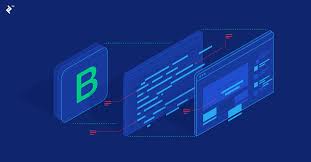Must know concepts in Bootstrap!!
 Roopa
Roopa
Introduction
Bootstrap is a free and open-source toolkit for building responsive websites and web applications. It's essentially a collection of tools that simplify the front-end development process. It has the 'mobile-first' responsive design as a goal.
Must-know concepts in Bootstrap!
Let's look into the important concepts of the Bootstrap framework.
Grid System
Responsive Design
Components
CSS classes
1. Grid System
The grid system in Bootstrap allows the developer to structure the website using rows and columns. The developer can define the number of columns per row and their responsiveness across different screens.
The grid system comes with containers, breakpoints, cols, and rows.
Breakpoints
There are 6 common breakpoints, which are:
Extra small: width < 567px
Small (
sm): width >= 567pxMedium (
md): width >= 768pxLarge (
lg): width >= 992pxExtra Large (
xl): width >= 1200pxExtra Extra Large (
xxl): width >= 1400px
Container
Containers are the basic layout element that is mandatory for the grid system. There are three different types of containers. They are:
.container- It sets the maximum width at each responsive breakpoints.container-{breakpoints}- It provides 100% width until a specific breakpoint.container-{fluid}- It provides 100% width at all breakpoints
Example: .container, .container-md
Columns
There are 12 columns available per row. Column classes indicate the number of template columns to span.
Example:
col-4(column with 4 span template columns)Rows
Rows are wrappers for columns. Each column has horizontal
paddingfor controlling the space between them.
2. Responsive Design
The word 'Responsiveness' stands for changing the structure of the webpage according to different screen sizes.
To achieve a responsive design, Bootstrap uses a grid system combined with breakpoints, column sizing, and breakpoint classes.
For example: class = "col-sm-6 col-md-4"
3. Components
Bootstrap provides a rich set of pre-built components like buttons, forms, navigation bars, modals, and more. These components come with pre-defined styles and functionalities, saving you time and effort in development.
Some of the most commonly used Bootstrap components are:
Navs & Tabs (Class:
nav)Navbar (Class:
navbar)Buttons (Class:
btn btn-primary)Dropdowns (Class:
dropdown, dropdown-menu)Progress Bars (Class:
progress)
4. Customization
Bootstrap utilizes a wide range of CSS classes to style your components and layout. To customize the appearance, spacing, alignment, and responsiveness, there are two ways.
Override the properties using CSS
Use of SASS
Extras: Button Types
Primary (
btn btn-primary)Secondary (
btn btn-secondary)Success (
btn btn-success)Danger (
btn btn-danger)Warning (
btn btn-warning)Info (
btn btn-info)Light (
btn btn-light)Dark (
btn btn-dark)
Advantages of Bootstrap
Since Bootstrap is open-source, it is free and open to use
It provides responsiveness
Easy to learn and use
Disadvantages of Bootstrap
It slows down website speed
The use of too many built-in classes in html may lead to bloated code
It is not ideal for highly unique and complex design
Best Alternative
If you are not a fan of Bootstrap (just like me 😋), then you can go with 'Tailwind CSS' as the best alternative for Bootstrap framework.
Subscribe to my newsletter
Read articles from Roopa directly inside your inbox. Subscribe to the newsletter, and don't miss out.
Written by

Roopa
Roopa
I'm a pre-final year computer science student at SRM with a strong academic background and technical skills. I am actively contributing to the beginner-friendly open-source repositories to showcase my skills in web development. I love to share my knowledge of technical skills and am a pro at debugging errors.